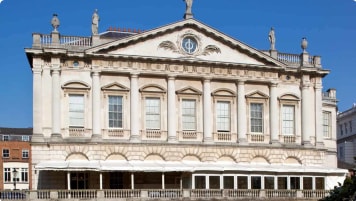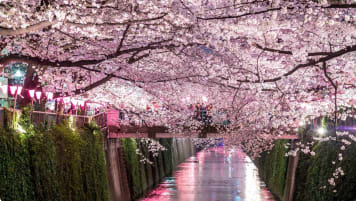Understanding the history of Japan for a small group tour.
Article for mature and senior travellers seeking to Join a small group package tour of Japan with an interest in the history and culture of these islands. From tea ceremony to understanding Hanami, the cherry blossom or walking Japan's coast. These small group tours are for couples and single travellers.
26 Jun 20 · 40 mins read

Understanding the history of Japan for small group Japan tours.
The history of Japan is composed of a great number of aspects. A reader may see the history purely as a chronicle of events but the very nature of the culture of this country of Japan makes it so much more. Adventures, and underlying lessons to be heeded, set within the framework of a mystery born through policies of isolation, make for an age-old story of intrigue and unanswered questions. And it those questions that the Japanese themselves as well as much of the rest of the world attempt to answer when they consider both their culture and their present position with today’s global society.
For the curious traveller Odyssey’s Japan tours provide a tour director and knowledgeable tour guide to explore and build on this escorted tour itinerary through the history of Japan, an understanding of the people, the society and culture of this country. For the mature and senior traveller this Japan tour is for couples and the single traveller who are inquisitive and ready to explore the great cities of Tokyo, Kyoto, Osaka, Hiroshima and Hokkaido. To reflect on the influence of Mount fuji on society, to understand the historic importance of perfection in Japanese culture. Japanese culture and history has it roots in myths. The relevance and importance of the history is revealed though the trip itinerary on this guided tour from the traditional tea ceremony to the hot spring, cherry blossom season, the role of the temple and the shrine such as Fushimi inari shrine and appointed UNESCO world heritage site visited. For the traveller on these Japan tours small group focused programs, the history of Japan is built up through the itinerary of the guided tour with Japan specialists supported by your tour director creating the perfect Japan trip, whether on the contemporary Japan or walking small group escorted tour.
It has been said myths act as a mirror to human nature, reflecting hopes, needs, wishes and our most basic fears. Myths of creation search for our origins, hero myths look for role models while fertility myths provide stability from both the point of view of the availability of sustenance and the sense of family. Most societies hold their myths somewhere in their histories, in one form or another. Earlier rulers and leaders harkened back to the myths rationalising and legitimising their positions in the eyes of their peoples.
Japan followed much the same course as this when, in the later 7 th century CE, Emperor Temmu had the Japanese ancient oral traditions recorded. Perhaps somewhat reworked to create a bloodline leading back to the divine, the myths appeared in the Record of Ancient Things ( Kojiki ) sometime in 712CE, with the Chronicles of Japan ( Nihon Shoki ) bound eight years later. Although not to be relied upon as an accurate historical source these ‘records’ provide, if approached with caution, avenues to understand some of Japan’s past.
The Emperor’s new take on the ancient myths allowed his Imperial family from the imperial palace, to claim descent from the Light of Heaven, Amaterasu who rules over the heavens from the Plain of High Heaven, Takamagahara . Interestingly, most scholars of Japanese studies who work with myths point out something they believe unique to this mythology. There appears to be no moral judgement weighed upon the figures within the tales. Although punishment is meted out, actions appear to be deemed acceptable or unacceptable rather than morally good or evil. There is no compendium of principles that are universally applicable. Certain commentators find a direct connection in this to the appraisal of behaviours in modern-day Japan.

This article on the history of Japan for small group Japan tours now begins a chronological review of the building of Japanese culture through its history. The concise history outlined in this article are intended to provide the traveller with key periods of significant shifts within the history of Japan. On your chosen package tour of Japan (or walking tour) then this article is the scaffold for your learning and is supplemented by the Japan specialists who are your tour guide for certain days within the framework of the Japan tour itinerary.
The Jomon Period (c. 13,000 BCE -c. 400 BCE ) Hunters and Gatherers
If people are asked where they think the production of ceramics originated, most would immediately point to Mesopotamia or perhaps even Egypt. Likely this comes from the greater exposure of the ancient history of those regions with terminology like the Cradle of Civilisation foremost in most people’s minds. However, pottery vessels have been unearthed on archaeological sites in Japan dating back some 5000 years before the appearance of this technology elsewhere. It seems, for reasons that can only be guessed at, the very early inhabitants of the islands of Japan stumbled across the processes involved in the firing of clay, moulding shapes and forms to assist their lifestyle, their culture and their belief systems.
There is no definitive evidence yet available to say when the first humans arrived in Japan although there are some who attempt to push back the advent of occupation in the region to something in the vicinity of 500,000 years ago. There may be a few who attempt to push that date back further but most now agree that 200,000 years is probable, even though the earliest human fossilized remains uncovered thus far date to 30,000 BP (before present).
With the conclusion of the last glacial period, that is the Ice Age, around 15,000 years ago, Japan lost its connections to mainland Asia as seawaters covered land bridges to the north, to the south and in the centre. Prior to the loss of these causeways, immigration would have been a simple matter of following migrating herds of food animals towards the east. Evidence suggests patterns, and therefore waves of migration taking place from at least 30,000 years ago. It is likely that successive groups travelled into the region before being denied access by rising sea levels. Keep in mind when you tour Japan that the coastline from those ancient times lies well below the water which means archaeologists tend to examine what would have then been sites located further inland. There would have been far more coastal activity than archaeological excavations would suggest.
As with many areas of the world at that time, the early inhabitants of Japan were probably organised in smaller groups, likely extended families. Following game to hunt and plants to gather would have been, by necessity seasonal and as such, basically nomadic. In the short term, seasonal variations would have also dictated the patterns of occupation and movement, while over the long-term climate change would have pushed family groups to particular regions. Ancient people had two choices, the first being to move in response to adverse climatic conditions, for example decreasing temperatures. The second would have been to stay in the area and adapt their lifestyle to better suit. It could be said with some certainty that different groups in ancient Japan made different choices regarding their survival although their motivations are far less sure.
People have by necessity responded to their environment and changing climate. With higher sea levels, it can be assumed that the benefits offered by the sea would have been used to greater advantage and as the waters fell, resources further inland would have then also been included. During this early Jomon period, archaeologists believe that the people constantly returned to avail themselves of the coastal areas and the abundant food sources- a preference for seafood?
One of the staples of the Japanese diet still now is rice, and most Japanese would more than likely closely associate this with a history stretching far back into the age of the hunters and gatherers. However, studies have confirmed that rice arrived into Japan sometime after its cultivation in China and Korea had begun. In fact, it seems probable that Japan may well have been the last of the nations of the Asian region to begin the cultivation of this particular grain.
Although Japan’s inhabitable surface area is relatively small, the high mountains, narrow coastal plains and volatile tectonic movement would have seen considerable regional variation among different groups, that is the existence of contemporary sub-cultures. Such variety would have also increased over time with particular technologies originating from a specific area. Evidence of the production of cloth from hemp has been found dating to around 5000BCE while the famed lacquer-ware appeared less than a thousand years later. These serve as two regional examples. The landscape, the changing environment and climate would also have limited the overall population of a region with great fluctuation in numbers throughout prehistory.
Now, although there would have been great diversity among the different groups, there are a number of specific changes that are apparent over a much wider area. One such change is a notable development of what seems to be an awareness of the supernatural. This is exemplified in new methods of burial, the advent of a number of stone circles and of standing stones. This may also indicate a change in the organisation of the Jomon society but whether the people lived in an egalitarian of hierarchical system is still hotly debated.
Archaeological excavations have shown that the people of Jomon were relatively short in stature and of a stocky build. These features, along with other physical affinities, allow anthropological studies to conclude the Ainu people on present-day Hokkaido are directly descendant from those of the Jomon. The physical characteristics of the Ainu set them apart from other modern Japanese who are now believed to have descended from a separate group from the later Yayoi period. The fact is that the Ainu are to be considered the indigenous people of Japan, although this was not legally or officially recognised until 1997.
The Yayoi Period (c. 400BCE-c. 250CE) – Emergence of a Japan
There is general agreement among scholars that around 400BCE, or possibly slightly earlier, a wave of new immigrants flooded into Japan. The origin and the motivations of these new people are unclear but it is obvious that Japan of the Jomon Period soon disappeared, or was rather subsumed by the newcomers. These people were taller and lighter in stature with narrower facial features when compared to the indigenous groups. They brought with them advanced technology for working both bronze and iron and evidence also points to their more highly developed methods of rice cultivation, the latter suggesting a greater reliance of this particular food source.
With the arrival of these immigrants, a significant increase in rice production can be seen, with the spread of paddies noted in much of the country, although particularly towards the south and the west. Keep in mind that although rice as well as bronze and iron were in Japan prior to the new groups’ arrival, the archaeological record proves that production was as yet on a limited scale. If we follow the widening distribution of the cultivation of rice in tandem with that of the metalworking we can approximate the pattern of the rapid spread of the immigrants. However, perhaps for reasons related to climate, the movement toward the northern areas was far slower than to the central areas of Honshu, with archaeologists speaking of a phase in Hokkaido they call ‘continuing Jomon.’
Usually, accompanying agricultural development, we see an increase in more permanent settlements and the establishment of defined territories. Also there comes a reliance on a basic commodity, here in point rice, which allows control and the growth of social hierarchy. With the founding of settlements and their boundaries, there would have come a need for defense as wealth increased and became more concentrated. For example, Japan has limited sources of ore for metal production so possession or control of this would have greatly augmented the trading status for that area. Other new technologies would also have contributed to the wealth of particular groups. The manufacture of silk from around the 1st century CE along with glass production allowed a far wider diversity of goods available for trading. Archaeologists have found that in each settlement dated to the Yayoi Period was a specific district dedicated to marketing and exchange. The largest settlement excavated to date, Asahi in the prefecture of Aichi (Nagoya), covered close to eighty hectares although the typical Yayoi town ranged from approximately two to thirty hectares.
The Yayoi Period and the increasing struggle for control of territory and resources meant that strategic alliances were creating something along the lines of a series of kingdoms. There are no written Japanese sources from this period so much of the knowledge about Japan during this time comes from the Chinese histories such as the History of Han ( Han Shu ) believed to have been completed in the late 1 st century CE. References there are made to the Land of Wa (The Land Of Dwarves) and its hundred kingdoms, all of which paid tribute China at that time. A later Chinese chronicle relates the story of the most powerful of the kingdoms in Wa , Yamatikoku and its ruler Himiko. This particular queen is shrouded in mystery and speculation. Some believe she gained power by extended warfare then maintain control by bewitching her subjects. The Chinese histories clearly indicate that Himiko’s city held sway over the entire land of Wa during her reign with continual gifts from the Chinese emperor and from other kingdoms. The location of Yamatikoku is still disputed but the majority of scholars place it within the Nara Basin region at the site of Yamato, later to become the centre of the first Japanese state.
When compared to the lengthy time span of the preceding Jomon Period, the Yayoi era is but an epoch of several hundred years, yet it was from within age of immigration that Japan moved from prehistory. Japan had moved from stone to metal tools and from gathering to organised cultivation with large permanent settlements, setting the stage for unification as state.
The Kofun Period (c. 250 – 710CE) – The Early Japanese State
When Queen Himiko died we are told she was buried along with one hundred of her servants so not only did her tomb need to accommodate these slaves but also other tributes. The stratified society now in place also meant that in the construction of her final resting place planning required a lasting symbol of her status and power, not unlike the ideas underlying the pyramids of Egypt. The notion of a need for imposing structures to house dead rulers was to continue for centuries, with the terminology for the period itself, Kofun referring to the raised mounds erected above the deceased. Clay figures, haniwa , excavated by archaeologists around the outside of many of these tombs, are thought to have been used as markers while the increase in grave goods obviously pointed to the status of the interred.
Certainly the Kofun served as a consistent physical representation of power during this era but likely the period’s most significant development is the formation of Yamato state centered around Yamato in Nara prefecture. The first historical books of Japan, mentioned previously, Nihon Shoki and Kojiki , feature Yamato as central to the early state with lists of emperors supplied. It seems that the early rulers, rather than by the use of force of arms were able to incorporate surrounding kingdoms into the Yamato system of administration by negotiation. Absolute dating cannot be ascertained from the Japanese chronicles but rather a progressive expansion with archaeologists suggesting that the imperial line of Yamato emerged as sole ruler in the early sixth century.
Buddhism was introduced into the Yamato state in the mid-sixth century with the development of a state religion seen as a way of extending political control. Therefore, by the reign of Emperor Yomei (585-587CE), the imperial family had adopted the religion. In doing so this outwardly gave the new state a certain degree of style and dignity, and by the promotion of particular Chinese cultural practices further cultivated this image. Yomei’s son, Shotoku Taishi continued this tradition of emulating China building many temples as well as drawing up a set of rules or guidelines for officials within the kingdom. The Constitution of Seventeen Articles formulated in 604 was heavily influenced by Chinese ideas with an obvious emphasis on Confucian harmony ( wa ) and recognition of the imperial line.
Subsequent rulers of the period undertook other reforms including the nationalisation of land holdings, the restructuring of the taxation system and the establishment of a new capital at Naniwa (present day Osaka). Laws were enacted accentuating the central power-base and the authority of the ruler as well as an official bureaucracy to control a growing but fluctuating population. Japan as an island was badly impacted by epidemic disease owing to low immunity levels. Continuous contact with the continent exacerbated the mortality rate at various times meaning that population numbers varied greatly.
As can be seen, the Kofun Period provided for the development of many of the necessary factors for the birth of a unified state, a nation, all of which were in place by the conclusion of the era. In fact the modern name of Japan, Nihon or Nippon (Source of the Sun), was being used in many of the documents of the time. And it was Emperor Temmu who pushed through the recording of the stories that clearly bestowed a legitimacy on the imperial line by establishing a linage that in its appearance possessed a divine heritage.
The Nara Period (710-794)
The founding of the new capital of Naniwa (Osaka) towards the end of Kofun by the Yamato state for one reason or another failed to last. Then in 710 the capital was moved yet again in an attempt to provide a central nucleus from which control could be administered. Heijo or Nara was chosen, with the new city designed based on a regular grid pattern, an idea drawn directly from China. Nara served as the capital for less than one hundred years but in that time the impact of political and legal reforms, in essence built on a Chinese base, became clear. Even the fact that the introduction of Chinese writing encouraged the first history books of Japan, Nihon Shoki and Kojiki , to be put together shows that Chinese influence was strongly felt on the island nation at this time. Todaiji temple, the largest building made of wood in the world, and its huge bronze Buddha is yet another example of the extent to which China proved to be the source Japan turned to for not only knowledge but also cultural practices suitably adapted.
Unfortunately, even with all the successes and progress seen within the imperial circles, outside with the general populace the situation did not appear to have been as comfortable. Documents show that the ordinary people suffered often from hunger and laboured under a heavy tax burden. Consider the taxation required by Emperor Shomu and his commissioning of not only Todaiji but also temples for every province. Peasants, comprising approximately 95% of the population suffered most from taxes levied, with wealthier private estates gaining an ever-increasing separation from the controls of the imperial authority. These factors would have contributed further to the power of a centralized government.
The Heian Period (794-1185)
In 781, Emperor Kammu came to the throne and for reasons that remain unclear he decided to once again move the Japanese capital. It took just over a decade for a final decision to be made on the location of the new city but in 794, again following the grid pattern Heian present-day Kyoto became the new capital. Fortunately, and unlike the short-lived Nara capital, Heian remained the official centre for more than one thousand years. Here in Kyoto, the imperial palace and court reached the pinnacle in artistry, in refinement and in its imperial protocols. The court produced what some believe to be the finest early literature, with the world’s very first novel written by Murasaki Shikibu an example of this. Her novel, the Tale of Genji ( Genji Monogatari ) tells of a life dedicated to pastimes and pursuits far removed from anything resembling matters of government, cloistered into something of a fantasy world behind palace walls. As the central government continued to flitter away its control another group emerged as a force to be reckoned with in the real world, the samurai, a warrior class from the provinces.

With the loss of control by the government, there was also a change in attitude to China, up until now seen as the font of knowledge and refinement. Many of the Chinese cultural practices were now shunned allowing a more Japanese identity to materialise and take shape. The Japanese kana script evolved from the Chinese script, with a more distinctive style of painting, writing and even aesthetic values, all eschewing those of the early Chinese-influenced periods.
The decline in power of the court was caused by a number of factors but likely the most devastating was an increase in private ownership of land, strangely left exempt from taxation. This created a situation where powerful families became more powerful with court-appointed officials whose job it was to oversee the provinces taking the opportunity to consolidate their position. Gathering as an armed force, with members often themselves from aristocratic families, the samurai became increasingly influential and powerful throughout the provinces.
Over the next century rival provincial groups vied violently for control of the weakened court and its government. One such clash was between the Minamoto and Taira groups with the latter emerging victorious. Kiyomori of the Taira group was then able to establish a strong power base in the capital, resisting a number of attempts at overthrow but finally being ousted by supporters of Minamoto in 1183.
The final years of the Heian period were wrought with not only the ravages of war but also a number of major natural disasters vividly related in a work written by the priest Kamo no Chomei . In his book produced in 1212, he describes a devastating typhoon in 1180, a series of floods and huge fires and then in 1184 an earthquake that brought desolation to the capital and its people. Militarily, Minamoto no Yoritomo dominated the scene introducing changes to usher in a new age in Japan.
The Kamakura Period (1185-1333)
Minamoto no Yoritomo, now an extremely powerful figure made plans that would surprise many. Rather than take the throne for himself and then allow his descendents to assume the position after his death, he petitioned the court to provide legitimacy to his authority. He requested this be accomplished by bestowing upon him the title of tai-shogun (great general). The court agreed and in 1192 Yoritomo became shogun, in essence the military branch for the imperial court and government. The new organisation came together mixing some of the older institutions under fresh guidance and control. The term bakufu that actually translates as battlefield or tent headquarters, appeared as an apt way to refer to the government with ruling power in the hands of the shogunate. Kyoto remained as the capital allowing the court to stay in place that likely added further legitimacy to the arrangements now in place.
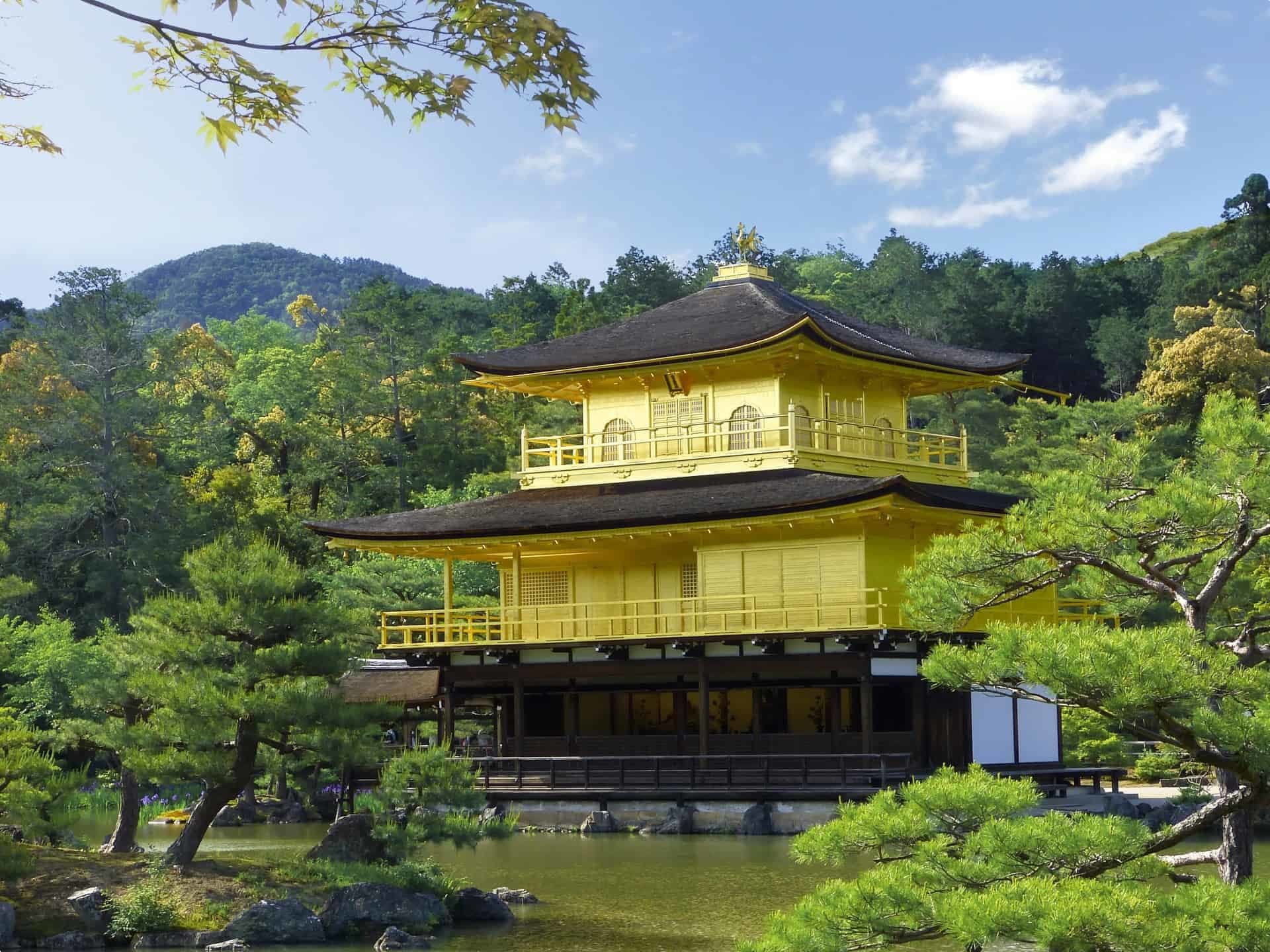
Although many speak of the Kamakura Period as the era of the warrior state, recent evidence and research point more towards cooperation between the court and the shogun in administering the more bureaucratic goings on. Meanwhile, as Yoritomo had gifted estates and positions of office to those people loyal to him, the provinces fell under their control with taxes or dues collected to be funneled back to the shogunante. Organised along the lines of a feudal system like much of the medieval world, this arrangement allowed the new shogun to exert his power over much of Japan.
A great deal of political intrigue at this time stemmed from Yoritomo’s innate suspicions of even those close to him. His half-brother Yoshitsune did not escape the shogun’s fears and was finally forced to commit suicide along with his wife and young children. Over time, more of Yoritomo’s relatives met a similar fate but such drastic measures surely created animosity, to say the least, between the shogun and those around him. A fall from a horse less than a decade into his rule ended his life, with mystery still surrounding the circumstances of his death. Leaving only a very immature heir, the shogunate and in turn the government was under the control of Yoshitomo’s widow, Hojo Masako. As can be assumed the intrigues and struggles continued with the uncertainties plaguing the government further complicated by the external threat of invasion by the Mongol Empire.
Kublai Khan, the grandson of Genghis, turned his attention to Japan after having subjugated much of the rest of Asia. Strangely, at first, neither the shogunate nor the court showed undue concern but some preparations were put in place for an expected attack. The naval force that came ashore in late 1274 at Hakata in north west Kyushu comprised close to 900 ships and 40,000 soldiers. Fortunately for the minimal Japanese defense a violent storm decimated the Mongols forcing them to withdraw. A second attempt at invasion was launched seven years later with a much larger force with at least 4,400 warships. The Japanese were far better organised this time holding back the much larger Mongol force.
Reinforcements were brought over from China to renew the Mongol effort but once again a severe storm descended upon the coast wiping out most of the Khan’s fleet and with it any chance of entering Japan. From that time, these winds whipped to gale force intensity became known as kamikaze – divine wind, a term best known for the suicide pilots of World War Two.
When the Emperor Go-Daigo came to the throne in 1318, he felt it was necessary to have the power once more in the hands of the imperial family. After a number of failed attempts to challenge the control of the shogunate, in 1333, he joined with the traitor general Ashikaga Takauji to attack the administration in Kyoto. Some weeks later another rebellious general, Nitta Yoshisada, was able to destroy the base of the shogunate bringing to an end the Kamakura Period.

The Muromachi Period (1333-1568)
With their successful return to Kyoto, Go-Daigo and Ashikaga Takauji, soon disagreed on the distribution of power. The former wanted total control to rest with the imperial family while the later wanted to assume the coveted title of shogun. Pitched battles between the two took place soon after, with Takauji emerging as the victor. His newly chosen Emperor fulfilled his wish to be elevated to shogun.
As was to be expected in such a heated political environment disputes continued between the court and the shogunate and even within the shogunate itself. In fact, Takauji had his own brother, Tadayoshi murdered. The effectual power of the shogun’s office steadily declined with powerful families extending their control of the provinces. It was not until Takauji’s grandson Yoshimitsu came to the position that he ‘forced’ many of the problematic family leaders to return to Kyoto to take up positions in the court. This allowed the shogun to keep a watchful eye over them and in effect greatly limited their influence. Yoshimitsu also reignited relations with the Chinese Emperor and his famous Golden Pavilion in Kyoto ( Kinkauji ) echoes the opulent palaces of the olden times.

The renewed strengthening of the shogun’s position was short-lived and after Yoshimitsu’s death more problems arose, with orders from the shogunate often being ignored by the court. The provincial families and their estates expanded but in doing so they came into conflict, with alliances quickly made and just as quickly broken. In one such conflict, the Onin Civil War in 1467 much of Kyoto was destroyed with the shogunate powerless to put a stop to civil unrest. Over the next century civil strife and turmoil was almost continual with this time becoming known as the Warring States ( Sengoku ) era.
It was during the tumultuous times of the Warring States era westerners first arrived in Japan. Three Portuguese traders landed on a small island near southern Kyushu in 1543 bringing with them muskets that the Japanese were soon able to copy and manufacture. Muskets were soon used by a number of the leaders in the conflicts. These traders who had been blown off course en route to China also introduced the first notions of Christianity into Japan. There appears no evidence as to how long the visitors spent ashore in a land riven with civil strife, without any apparent form of strong central government and completely fragmented.
The Azuchi-Momoyama Period (1568-1600)
Japan at the close of Sengoku era was a land of separate states hanging together by very weak threads. In such a condition the country could be easily exploited by a better organised invader but fortunately three astute military leaders put Japan on the road to unification; Oda Nobunaga (1534-82), Toyotomi Hideyoshi (1536-98 and Tokugawa Ieyasu (1542-1616).
Nobunaga was a Daimyo , something akin to a feudal lord, from Owari Province in the area of present-day Aichi Prefecture. During the clashes between rival estates, he was able to gain considerable power and control. Supporting Ashikaga Yoshiaki, Nobunaga was able to snatch Kyoto in 1568. Yoshiaki was then installed as shogun although the real power remained in the warlord’s hands. Some five years later Nobunaga expelled the shogun from Kyoto.

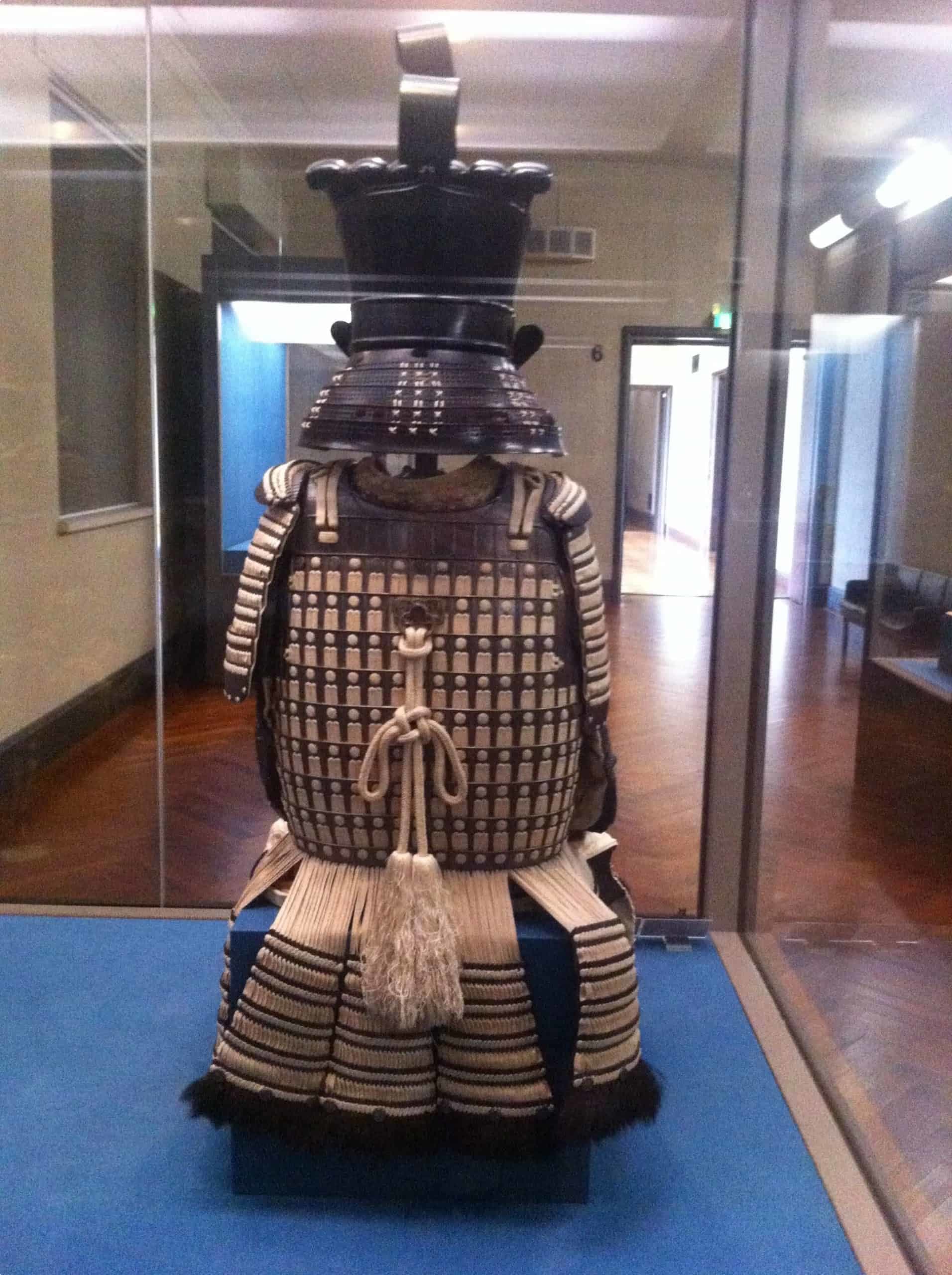
Nobunaga proved himself to be an unusual figure in the history of Japan, not so much for his unrivalled cruelty to his enemies, family and opponents but his complete disdain of a need to possess any degree of legitimacy within the overall scheme. He never pursued the title of shogun, some would say because of his inflated ego. However, even though his brutality remains prominent, his cultural reforms and building projects form part of his legacy. His stated aim to unify Japan under military rule was well underway when in 1582 after a dispute with one of his officers, Akechi Mitsuhide, he died in a fire at the temple of Honnoji in Kyoto. His retainer Toyotomi Hideyoshi continued on with Nobunaga’s plans.
Hideyoshi appears as one of the most popular figures from this period as he rose from the position of footsoldier through to that of general under Nobunaga, then onto occupy the most powerful position in Japan. After the death of his lord, Hideyoshi defeated Akechi. Then through battle and crucial alliances he further expanded his circle of influence. His strategy of allowing his loyal supporters control of particular regions, as well as taking hostage family members of disruptive daimyos, helped dissipate much of the opposition towards him. In 1588 in an episode known as the Katanagari , he set about removing the threat of uprising at a grassroots level by confiscating weapons throughout the countryside.
While continuing the survey of lands initiated by Nobunaga, he also undertook a census of the entire population and brought under control the breakaway northern provinces. This meant that Hideyoshi was able to complete the unification of the entire country, although consolidation under one government was only partially achieved.
As with so many of his predecessors, Hideyoshi felt that he was constantly under threat from not only those further afield but even within his close family. Perhaps based on these fears, he was, at first, quite tolerant of the fledgling religion of Christianity probably because it suited his struggles with Buddhist priests, but he then ultimately censured Christians in his Edict of Expulsion of 1587. With the arrival of Franciscans he became almost fanatical suspecting new Christian arrivals as the spearhead of a possible invasion. This culminated in 1597 with the crucifixion of twenty-six Christians in Nagasaki. Hideyoshi died soon after this incident from an unidentified illness.
Prior to his death, likely to maintain an element of continuity of his line, Hideyoshi founded a council consisting five chosen feudal lords, daimyos. One of the Five Great Elders was Tokugawa Ieyasu. When Hideyoshi died, as was to be expected, a struggle ensued over who would be his successor. The problem was settled in 1600 by force of arms with Ieyasu leading is supporters in the Battle of Sekigahara to victory.
The Tokugawa Period (1600-1868)
After his victory at Sekigahara, Tokugawa Ieyasu’s main goal was to make certain that control remained with the Tokugawa. Sometime before Hideyoshi’s death, Ieaysu had made an unsuccessful move on his lord’s authority, but this fortunately resulted in an alliance. Ieyasu was provided with territory recently usurped from rivals. In choosing his base within these newly awarded lands, Ieyasu opted for a small centrally located fishing village, Edo, now the city of Tokyo. Here, after further expanding his power, he built Edo Castle that later served as the foundations for the present Imperial Palace.
Unlike Nobunaga or Hideyoshi, Ieyasu accepted the title of shogun from the then Emperor Go-Yozei. His position though now legitimized in the eyes of the court, he was still under threat from the son of Hideyoshi who had been previously promised the title and the power. Hideyoshi’s son, Hideyori had firmly established a base in the well-defended Osaka castle. It took Ieyasu a number of years to finally eliminate this menace, when in 1615 he was able to force Hideyori to commit suicide. To ensure annihilation of any challenge he then also executed Hideyori’s seven-year-old son Kunimatsu.
Once this was accomplished Ieyasu set up a series of new laws to enforce stability and control within military affairs. In essence, these dictated that any changes that could level influence on the status quo must be subject to shogunate approval. This even included marriages of the daimyo and the mobility of particular people. Ieyasu though did not live long enough to see the full effect of these new controls as he died of sickness soon after in 1616. His son Hidetada continued his policies as did most of the Tokugawa successors.
Hideyoshi Toyotomi’s earlier policy of eliminating any class mobility was further defined making this into a formal system based on a strict hierarchy. The Warrior-peasant-artisan-merchant arrangement, the shi-no-ko-sho structure was to be enforced. Priests, nuns and nobles of the court were not included in this scheme while within each class a number of sub-categories were in place, this being especially relevant to the Samuari or warrior class. Two more groups existed outside of the four-tiered class system, with these sub-groups shunned as outcasts. The eta (the filth) and the hinin (non-people) were those whose occupations dealt with the ‘unclean’ activities such as butchering, dealing with the dead and working with leather. The eta , the present-day burakumin or village people are ostensibly still shunned in much of the Japanese mainstream society. In most cases, class was determined by birth making any upward movement close to impossible. One of the most distinct divisions though was between the Samurai, at roughly six percent of the population, and the non-warrior.
Other measures enacted by the Tokugawa to limit any instability or threat included a wide-ranging series of restrictions, with any infringement usually met with harsh punishment. By the destruction of most bridges in regions, people were directed through checkpoints where their documents could be checked. A blanket curfew was put in place while a secret police force was organised to report on any suspicious activity or possible insurrection. Petty theft was punishable by death as was causing a house fire, the latter in view of most houses being made from wood. The notion of collective responsibility also saw the execution of families or, at times, even entire communities. The possibility of collective punishment brought about mistrust and suspicion of strangers, something that contributed to the later isolationist ideals.
Westerners arriving into Japan created one of the major problems, and those who preached their Christianity especially so. The idea that this god of the Christians would not accept compromise presented not so much a religious dilemma for the shogunate but a direct political challenge to their power. Because of this, persecution greatly intensified during the early part of the 1600s, culminating in 1638 with the Shimabara Massacre where forces dispatched by the shogunate killed and estimated 35,000. Although the campaign to Nagasaki began to halt a rebellion over taxation, it soon encompassed the murder of men, women and children, the greater majority Christian. By the following year, most westerners had either been expelled from Japan or left of their own choice. A small enclave of Dutch traders was permitted to remain on an island in Nagasaki Harbour. Formal trade was now limited to China and Korea meaning that Japan closed itself off from the rest of the known world.

Some scholars believe that the coming of Westerners had planted the seed for a sense of nationalism, with reunification fostering further growth of this ideal. Hokkaido and the Ryukyu Islands (Okinawa) were also incorporated into Japan during the Tokugawa establishing the boundaries for the nation similar to those of today.
During the next century, people began to doubt that the shogunate was the best-suited form of government. At this time, there a renewed interest in the Shinto religion as contemporary scholars examined old texts such as Kojiki (712). The combination of Shinto and texts associated with old Japan and its beliefs came to represent pure Japanese values removed from being ‘too Chinese’. This revival was likely a continuation of the emerging national consciousness.
By the end of the 18 th century Edo (Tokyo), with a population of well over a million people had become the largest city in the world. Kyoto and Osaka had also continued to grow and expand, each with populations in the vicinity of at least half a million. Although restrictions on travel were still in place people gravitated to the larger centres in search of a better life. In the towns, rather than the static sedate ways preferred by the shogunate and the court, a more dynamic culture seemed to be developing due in most part to the influx of new residents and the economic stimulus they added. New forms of entertainment appeared moving away from the more restrained styles of the nobles. Haiku and its short meaningful lines, along with the woodblock prints, ukiyo-e (impressions of the floating world), their vibrant colours and their often sexually explicit content become most sought after.
The age of Edo was an awakening that greatly alarmed the shogunate and its control. Sexuality was seen to form a centerpiece of this movement with the shogunate banning female kabuki actresses, believing it may be able to suppress something of this revolution. This era was also the time of the geisha who entertained in a number of ways including the selling of their bodies. In an effort to exert some regulation over this, ‘pleasure districts’ were founded in the major cities, such as Gion in Kyoto and Yoshiwara in Edo (Tokyo).
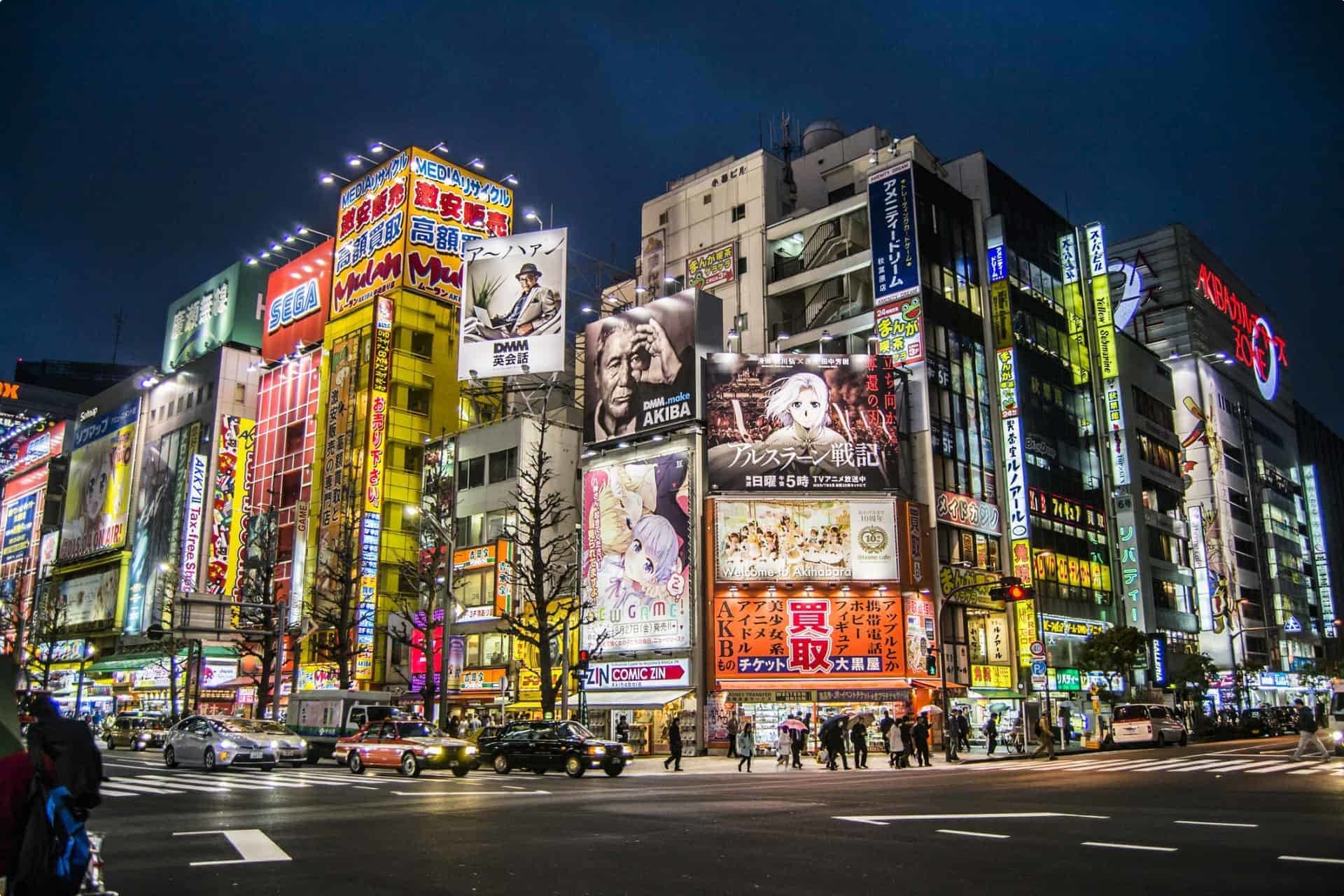
In marked contrast to the prosperity apparent in the towns, the peasants in the countryside did not often fare as well. Famine and the seasonal failure of crops teamed with a heavy tax burden in certain areas saw the gap between the affluent and the poor increasing. The introduction of the move valuable crops such as sugar and tobacco supplanting those of rice contributed a worsening situation. Having said this, in overall terms, it appears that living conditions did improve during this period as a direct result of an expanding economy.
The rapidly improving economy led the way to something that the shogunate had not really expected. The merchant class, sitting at the very bottom of the enforced status structure became far wealthier than those at the top who continued to amass debt. As a matter of course, money began to buy privilege with the Tokugawa system, once so inflexible, showing signs of unwanted flexibility and stress.
The Fall of the Shogunate
For almost two hundred years Japan had been able to virtually isolate itself from the surrounding and encroaching world. A number of unplanned visits of foreigners had occurred of course but these ended in either expulsion or execution. The close of the 18 th century and the first decade of the 19 th century saw a concerted effort by nations such as Russia, Britain and America to establish relations with the island nation. These ended in failure. America renewed its endeavors in the middle of the century but Japan had witnessed problems in other parts of Asia such as the Opium Wars and would not relent. Ardent nationalists aided the cause, with any discussion of allowing western influence to return to Japan met with violent opposition. Many of the common people believed that the shogunate was no longer able to control the situation and support began to shift back towards the Emperor and the imperial line. The samurai, due to their involvement with official administration felt their role dwindling and losing respect.
In the summer of 1853 Commodore Matthew Perry steamed into Tokyo Harbour with a series of demands and a letter from the American President Millard Fillmore seeking to break the seclusion policies of Japan:
GREAT and Good Friend: I send you this public letter by Commodore Matthew C. Perry, an officer of the highest rank in the navy of the United States, and commander of the squadron now visiting your imperial majesty’s dominions.
I have directed Commodore Perry to assure your imperial majesty that I entertain the kindest feelings towards your majesty’s person and government, and that I have no other object in sending him to Japan but to propose to your imperial majesty that the United States and Japan should live in friendship and have commercial intercourse with each other.
(an excerpt from Fillmore’s letter 13/11/1852)
Commodore Perry stayed in port for ten days, before withdrawing to the Chinese coast with his ships to wait for the demands to be considered. As he had promised, however, half a year later he returned with a far larger fleet and over a hundred cannons mounted and ready to use. The Tokugawa shogunate capitulated giving in to all the American demands. The Treaty of Kanagawa was signed in March 1854 with the first US consul, Townsend Harris arriving to his post some two years later. The gates were now opened and a series of treaties with other nations followed in quick succession.
‘Outsiders’ began to arrive in ever increasing numbers and many did not appreciate the social or cultural ‘niceties’ of their recently opened host nation. Nationalists especially those among the samurai reacted swiftly and often with violence as they believed the shogunate was now completely ineffectual in dealing with this ‘invasion’. Hatred and resentment towards the shogunate grew, and in July 1863 nationalists attacked British and American vessels in the Shiminoseki Strait. The foreigners fought back destroying much of the opposition force. Feeling that they should also make a show of power against these rebels, the shogunate also sent forces against the leader, Choshu. Supported by samurai and a militia built up from the peasants of the region Choshu was well able to make a successful stand against the shogunate, in fact, the first such victorious and defiant act against the ruling power.
A new shogun, Yoshinobu, came to power in January of 1867. Realising if he did not act his position and power would be quickly subsumed, he put forward plans to restructure the court and the shogunate. Rather than just sit back and allow a reformed shogunate to continue in power, Leaders of Choshu and Satsuma (another vocal opponent), with assistance from a court aristocrat were able to have an imperial decree delivered that finally abolished the shogunate.
This imperial authority allowed them to occupy the court in what was called a restoration of imperial power. The fifteen-year old Emperor Mutsuhito, who had come to the throne after the suspicious death of his father Komei, was now in charge so to speak. When Mutsuhito died in 1912 his government became known as Meiji (rule by the enlightened) and the reinstatement of his position as the Meiji Restoration heralding the end of the rule and age of the shoguns.
The Meiji Period (1868-1912)
It would be difficult for any fifteen-year old no matter how enlightened to undertake the ruling of a nation such as Japan without advisors. The majority of his ‘team’ were samurai from the Choshu and Satsuma domains with some from other areas such as Hizen (Kyushu) and Tosa (Shikoku). Many of these advisors’ names feature prominently in this period.
As with any establishment of a new regime, its legitimacy must be recognised and its power strengthened. The upheavals of the recent past were fresh in the minds of the population and the public longed for signs of a restoration, not some much of the imperial rule but of stability and hope. The last pockets of resistance, those loyal to the shogunate were quickly and effectively mopped up while assurance for future security was provided for with the issue of the Charter of Five Articles . Interestingly, the final article spoke of ‘the seeking of world knowledge to strengthen the country’, which, rather than directly opposing foreign influence, implied gaining advantage from any such interaction.
Also in taking steps to consolidate and centralise the power base, the new government decided that one capital city was of more advantage than the two, Kyoto and Tokyo (Edo) that previously operated. Edo was chosen as the seat of government as moves were made to nationalise all land. The feudal lords returned their estates and holdings, with generous financial considerations given, to the government. These lands were then reorganised into prefectures, completing this by 1871 when they legally outlawed possession by the daimyo. Meanwhile monetary reforms were set in motion with a new mint built along with the introduction of a currency system, decimally-based on the yen.
The four-tiered class system was also restructured so as to have only three levels, the nobles ( kazoku ), the samurai ( shizoku ) and the commoners ( heimin ). Officially the outcast classes of the eta and hinin were now on an equal footing but the discrimination proved to be so firmly entrenched that even today in some areas of Japan, the effects are still noticeable. It was also at this time that commoners were permitted to adopt family names or surnames.
Soon after, the samurai were stopped from carrying their weapons in public, a source of great discontent for this former warrior group. The Satsuma Rebellion of 1877 led by Saigo Takamori was an armed conflict against pro-government forces. After years of foment Saigo assembled over 40,000 men and fought a series of battles across Kyushu. In a major battle at Kumamoto they once more went against the Emperor’s army. His force destroyed, Saigo was left with only a small group. Their final stand was at Shiroyama in Kagoshima. Rather than suffer the humiliation of capture he committed suicide. Tom Cruise’s epic movie The Last Samurai is loosely based about this, the final appearance in the field of samurai warriors.
A More Western Society
With the fall of the samurai most within the government were in complete agreement that if Japan was to move forward it needed to modernise, in essence to westernise. Treaties signed during the death throes of the shogunate were seen, and rightfully so, as one-sided and Japan needed to become involved on the world scene as an equal if it were to be taken seriously. Western-style institutions and cultural practices were now felt to be a necessary addition to the Japanese way of life in all areas.
Some of the first changes were sweeping and confusing. Imagine the way you kept note of the simple passing of time being completely overhauled. In place of the lunar calendar, the introduction of the Gregorian (solar) system meant dates appeared to jump ahead a matter of weeks. Newspapers became more widespread in circulation while particular styles of western clothing became not only acceptable but also popular. New restaurants were rapidly opened to provide for the introduction of eating beef. One of the best known Japanese dishes, sukiyaki , originates from this early trend.
Perhaps one of the greatest indicators of modernisation was the opening of Japan’s first railway and its impact on the economy. People and products could now be moved quickly from place to place and city to city. Instead of a two-week walk from Kyoto to Edo, passengers could complete the journey in less than a day and for almost one third of the cost. Other transport systems such a steamships and coaches rapidly expanded their services allowing the basic infrastructure of the nation to move ahead.
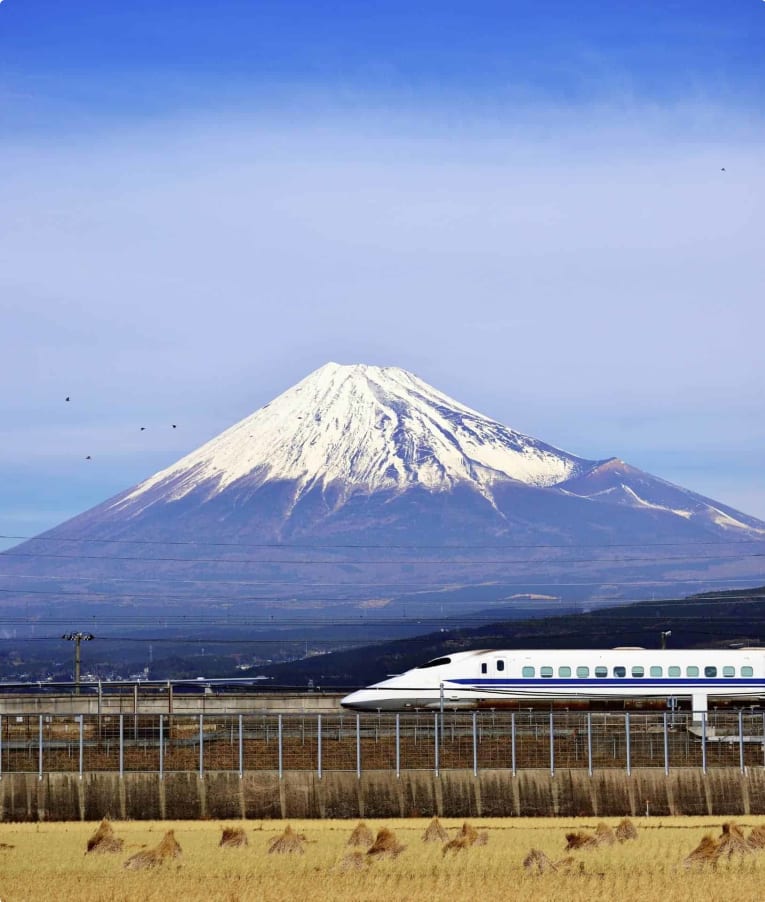
The Meiji Period was an age of great innovation and improvement with the government realising that if they did not take appropriate steps with their nation in its modern infancy they may well lose control. Nationalism was promoted as not only an ideal but also as the goal for the entire population. Education had become almost universal which provided a platform for controlling and channelling aims, values and beliefs. School texts were now chosen based around a strict set of policies which saw the insertion of more nationalist content along with an obvious Shinto base. Many would say that the content fell along the lines of the first texts of the Japanese, Kojiki and Nihon Shoki with the emphasis placed on the Imperial line and its ‘divine’ origins.
Outwardly the government appeared as democratic but strict censure limited assemblies or public meetings placing restriction on the freedom of speech while the right to vote was also constrained by undemocratic measures. There was, at this stage, no formal constitution. Ito Hirobumi, one of the initial advisors to the Meiji emperor, and now holding the position as Prime Minister, felt it necessary to right this situation, travelling to Europe to examine the organisation and content of other constitutions. February 11 th 1889 was chosen as the date to promulgate the nation’s constitution. The particular date came from Nihon Shoki where it is given as the founding of the original Japanese state, a reworking into the modern myths of Japan. The constitution appeared to allocate absolute power to the Emperor although in reality he could not make any decision without the support and agreement of a minister.
Politics and ‘Gunboat Diplomacy’
The following years saw various methods used to force particular polices, with democracy taking a back seat to the more authoritarian hand. As is often used as a tactic, the government shifted its focus to draw attention away from the internal strife. Although no longer a pressing concern, the invasion and colonisation of Japan was put forward again as a possibility. The expansion on the Asian mainland by particular powers acted to bolster this fear. In addition there had been a great deal of tension between Japan and China over the issue of Korea.
When, in 1894, the Korean king asked for helped to suppress a large religiously-based rebellion both China and Japan sent along military aid in the form of troops. Once the problem had been dealt with neither China or Japan would withdraw their forces. The sinking of a Chinese troop carrier by the Japanese was followed by a formal declaration of war, the beginning of the Sino-Japanese War. Japan proved to be superior in every aspect with Chinese land and sea forces soundly defeated. The Treaty of Shimonoseki signed in the spring of 1894 weighed heavily on Chinese interests forcing them to give up territory in Korea, Taiwan and Manchuria.
Japan’s move towards empire was off to a very solid start. Disappointingly, the area on the Liaotung Peninsula (Manchuria), ceded by the treaty, caused disputes with Russia, France and Germany citing likely future instability. To maintain relations, the Japanese government agreed to surrender this newly acquired territory much to the disgust of the Japanese public. The outcome of this was that the bid for political stability at home by expansion failed miserably, throwing the politics of Japan into complete disarray, with parties and members changing sides without apparent reason or motivation.
Soon after Japan relinquished their control over the Manchurian peninsula, Russia continued their expansion into Asia. In 1900 Russia stepped in, along with other nations to help put down the anti-foreign Boxer Rebellion in China but decided to leave its troops in position even after the rebellion had been successfully squashed. War with Russia was beginning to appear unavoidable but opinions differed greatly in the Japanese Diet. In 1902, one party was able to secure the Anglo-Japanese Alliance. Now although this did not mean Britain would fight with Japan against Russia, it did provide a certain assurance that other of the western powers would intervene should Japan go to war.
Diplomatic relations were severed in February 1904 with Japanese naval forces attacking Russian ships in Port Arthur. Landing troops in Korea, the Japanese army advanced into Manchuria to lay siege to the port. There were heavy casualties on both sides but finally Japanese forces took Mukden, the capital of Manchuria in March 1905. A Russian fleet bringing reinforcements was met and destroyed in the Tsushima Straits by the Japanese Admiral, Togo Heihachiro. The defeat forced Russia to the negotiating table with the US President Theodore Roosevelt acting as mediator.
Very soon after the Portsmouth Treaty, signed in September 1905, Japan moved to establish control over Korea making it something like a protectorate with Hirobumi Ito as the general in residence. All Korean officials were replaced and the Korean military forced to disband. Ito was assassinated while there, in 1909, and the following year Japan annexed the Korean nation without any apparent international antagonism.
At home, the political situation had not quietened with martial law needing to be instated. Prime Minister Katsura was forced to resign, replaced by an aristocrat from the imperial court, Prince Saionji Kinmochi. Saionji was able to maintain a relative stability in the politics of the nation that stayed in place for the remainder of the Meiji Era. Even when Katsura later returned to office, outwardly there appeared a general control albeit overtly authoritarian.
Emperor Mutsuhito passed away from illness in July 1912 bringing the Meiji Era to a close. Throughout his reign there had been wars and great uncertainty but Japan modernised and entered upon the world stage. Yet even with this move towards being recognised as one of the world’s major powers during this period, there is always noticeable reference back to Japan’s past and its values and traditions.
The Taisho Era (1912-1926)
The Emperor Yoshihito assumed the throne upon his father’s death, with Japan in a strong position in most regards. Thought suitable for Japan at the time the name Taisho was selected as the name of the new era. Meaning ‘Great Righteousness’, it was thought fitting to herald a time for Japan of confidence and a sense of continued permanence. Unfortunately, the Emperor’s health was not up to the task as he suffered from some unidentified or perhaps rather a not ‘to be made public’ disorder. In his mid-thirties when he took up the imperial role, his condition gradually deteriorated to a point where even walking and speaking were tasks in themselves. The situation could not continue so in 1921 his son Hirohito took over the reins, but only as regent.
When the era began with Yoshihito, a political crisis occurred when the Saionji cabinet refused to allow further military expansion. This brought about the collapse of his cabinet with Katsura Taro being asked to take up the position for his third term. Katsura, unpopular with the general public, had no real interest in the party politics that had developed during the closing years of the Meiji Era. A vote of no confidence was put forward as angry demonstrations were staged outside the Diet building. After less than two months in his position Katsura was forced to resign. A series of Prime Ministers followed in quick succession allowing party representation to be strengthened over time. First came Yamamoto Gonbei, seen as politically neutral, next Okuma Shigenobu, unduly influenced by powerful men around him, and then Terauchi Masatake who strongly disapproved of party politics.
In 1918, Hara Takashi came to the position due to his samurai descent and being very well connected. Supportive of the basic premises underlying a party cabinet he appeared to the public as a representative of their voice in government. With Hara’s assassination in 1921 a number of successive non-party cabinets came to power. As with the Meiji Era, the politics of Taisho followed similar patterns with more liberal and democratic ideals floated but generally kept in check.
Without a doubt, the worst event to strike Japan of the Taisho Era came in September 1923 with the Great Tokyo earthquake. More than 100,000 people lost their lives with upwards of three million left homeless and destitute. Martial law was declared almost immediately but this did not halt particular groups taking the opportunity to act on real or imagined grievances. Not only was anti-Korean sentiment rampant with over 6000 Koreans murdered but also the military and the police eliminated pockets of presumed opposition without fear of reprisal or justice.
On the international front, World War One had recently finished. And Japan as an ally of Britain took an active part in the Versailles Peace Conference (1919). Japan had not been actively involved to any great extent in the war although they did assist Britain to take a German naval base in Tsintao China. In the aftermath, Japanese territorial expansion was actioned, with much of the German controlled areas of the Shandong Peninsula in China and previously German-owned Pacific islands taken over.
Japan served as one of the founding members of the League of Nations in 1920 while also taking part in the Washington Conference at the conclusion of the following year. Their participation in both these decision-making forums that would impact the future of the world and its nations left Japan shocked and angry. Their requests for a clause on racial equality to be included was bluntly refused. Apparently one of the most vociferous opponents to this at the time was Australia with its White Australia Policy well and truly in operation. Japan came to believe that as a major power in a west-dominated world, there would never be true equality.
The Showa Era (1926 – ) The Political Groundwork for War
In late December 1926 the Emperor died with Hirohito now moving up to fulfill the position. Hirohito and his Showa (Illustrious Peace) reign were beset from the very beginning by both domestic and international upheavals. Well-travelled and educated, he was planning to organize his rule along the lines of his definition of a constitutional monarchy. Unfortunately, he believed himself as directly descendent from the divine and at all times separated himself from his lowly subjects remaining poorly informed of the word and the feel on the street.
Although World War One had greatly boosted Japan’s production economy, the ‘war prices’ soon began to fall drastically. Construction experienced a brief revival in the aftermath of the 1923 earthquake but as the result of the financial crisis a great percentage of Japanese banks failed in 1927. The rural sector, along with one of Japan’s most profitable exports, silk, also witnessed an utter collapse in price. Disparity between the living standards of different levels of society in both rural and urban Japan grew, with the widespread conviction that big business controlled the politics of the nation. The public and the military became further disillusioned and contemptuous of the perceived lack of interest by the government. Many pointed to the western practices and organisation seen in many Japanese institutions as the root cause of each and every woe.
As problems mounted domestically, military leaders called for a solution in the form of aggressive military expansion, the first target being China. Covert action by the Japanese military hoped to motivate further action but the truth was revealed. Hirohito forced the then Prime Minister Tanaka Giichi to resign over his soft attitude to the instigators of the Chinese incident, with Hamaguchi Osachi stepping into his place.
Hamaguchi attended the London naval Conference of 1930 hoping for terms that would remove present limitations on Japan’s fleet and naval capabilities. He was unable to negotiate any better position and that was met with great public disapproval at home. The Prime Minister was assassinated soon after his return with Japan then withdrawing from any international agreements that placed restrictions on their military expansion. By the time of the Manchurian Incident in September 1931, where similar covert action hoped to direct blame on China, a more moderate approach failed. Swift military intervention followed with the Prime Minister Wakatsuki Reijiro left powerless to act. Wakatsuki relinquished his post soon after with his successor Inukai Tsuyoshi stepping up to try to bring the military back into line. Far right naval officers attacked and killed Inukai less than three months into his position.
The Japanese military involvement in Manchuria initiated the establishment of Manshukoku , the Republic of Manchuria later to be renamed as the Empire of Manchukuo. China’s famous ‘last emperor’, Puyi was installed as the puppet ruler. With condemnation of the occupation by the League of Nations, Japan promptly rescinded its membership. Domestically there was little in the way of regulations to keep the military in any sort of check. Hirohito, in his cloistered world proved no obstacle for the ever-expanding power of the military. Japan was rife with assassinations and attempted coups as different groups struggled for control. Perhaps the Illustrious Peace was not an apt choice for the name of the era.
The Lead-Up to War
Interestingly, the Japanese economy of the 1930s had taken a decidedly upward turn with a number of forward-thinking economic policies put in place. Japan was, in fact, the first developed nation to step clear of the Great Depression. Unfortunately, the benefits of the economic boost were not filtering through to the majority of the people. By way of example the huge companies of Mitsui and Mitsubishi controlled close to 15% of all capital in the industrial sector. People’s belief of the government’s involvement with big business increased.
The resources of the mainland now became a focus for increased prosperity with an overtly aggressive approach supported by many. After yet another failed coup at the end of February 1936, a new cabinet was formed with Hirota Koki at the helm. Although only in office for a few months he immediately increased the military budget while pushing for heavy industry to be put on a war footing. It was in November of that same year that Japan entered into a pact with Germany, and later Italy, to limit possible Russian expansion into Asia.
With the Marco Polo Bridge Incident of July 7 th 1937, where Chinese troops allegedly fired upon Japanese soldiers, Japan entered a war with China. The incident escalated quickly with neither side willing to back down or negotiate. The new Japanese Prime Minister Konoe Fumimaro pushed for all out war, with the Chinese under Chiang Kai-shek prepared to give no quarter. As the warfront widened, fighting had reached Shanghai by August, the city falling just three months later. The Japanese army then attacked the city of Nanking that soon collapsed under the onslaught. The Rape of Nanking followed the city’s defeat with the atrocities committed by the Japanese troops likely one of the most infamous in recorded history.
It soon became obvious that the war with China was going to be a very much drawn out affair leaving Japan vulnerable to Soviet aggression and intervention. Further adding the Japanese concerns was the fact that Germany had signed a non-aggression pact with Russia countermanding any agreement made earlier with Japan. Fortunately, the situation for Germany early in the war allowed them to ask Japan to join a pro-Axis treaty along with Italy, the Tripartite Pact (September 1940). The most crucial point of the agreement was that should any of the countries be attacked by a nation not involved in the European war, the others would come to its assistance. For Japan this included the United States. Circumstances seemed to favour further Japanese expansion and its entrance into World War Two.
Odyssey Travellers Japan tours small group package tours are like many of this tour company’s offering around the world, built around history and culture and the visual settings. As well as the history, an appreciation of Japanese cuisine, the traditional tea ceremony, the role of the geisha and presence of ancient temples and more become increasingly understood on this Japan tour.
Related small group tours of Japan
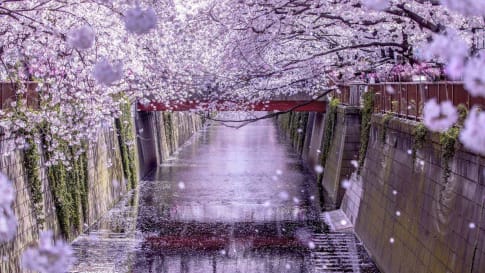
12 days
Sep, MarJapan Odyssey - Small Group Tours for Mature Travellers
Visiting Japan
During this small group program we encounter history from ancient periods; religions such as Buddhism and Shintoism; the philosophy of the people through visits to world renowned temples and shrines; and old towns full of ancient legends of Samurai and more in Japan. Together we, as mature and senior couples or solo travellers will share some traditions which the Japanese have inherited. A variety of sites including UNESCO World Heritage sites, has been chosen for this tour, all filled with clues such as Hanami or forest bathing to understand the essence of Japan including astro boy.
From A$14,995 AUD
View Tour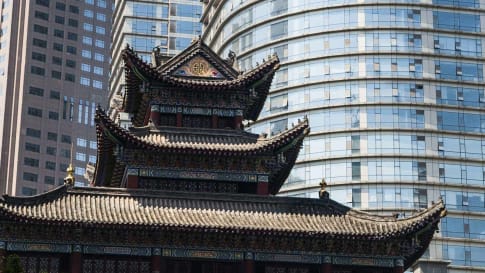
21 days
OctContemporary Japan | Small Group Tour
Visiting Japan
This small group tour organised by Odyssey Traveller, Contemporary Japan, will take you through modern life in this East Asian jewel. This contemporary tour for couples and solo travellers is an expedition through Japan’s major urban areas, beginning and ending in Japan’s tantalising capital, Tokyo. For the first 12 days we get our fill of Tokyo fashion, technology, culture, and sights.
From A$19,625 AUD
View Tour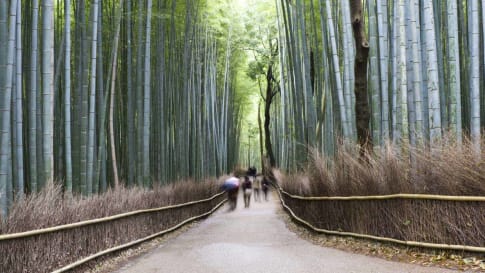
10 days
AprJapan History by Rail - Small Group Tour
Visiting Japan
Explore historic and present day Japan. Journey by rail to regions and great cities to learn about their historical significance.
From A$13,995 AUD
View Tour
14 days
Oct, MayWalking Japan | Small Group Tour
Visiting Japan
Escorted small group tour, Walking Japan, for mature and senior couples and solo travellers, a walking program traces the journey of 17th century Japanese poet and haiku master, Matsuo Basho. We walk in his footsteps on this 13-day journey around the northeast Tohoku region of Japan.
From A$12,715 AUD
View TourArticles about Japan

10 Books on Japan | A Guide for Senior Travellers
Tours of Japan Visiting Japan, a land of dazzling contradictions, is an unforgettable experience. High-tech cities harbour relics of a fascinating past. Futuristic fashion and gadgets share the streets with evidence of deeply held traditions.…

Forest Bathing in Japan
Forest Bathing in Japan Much has changed since we last wrote about shinrin-yoku or forest bathing in 2017 (you can read the original article after this introduction) as the movement has gained considerable momentum in…
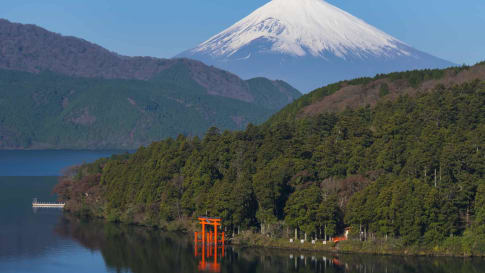
Hakone National Park, Japan
Hakone National Park, Japan The Hakone National Park is part of the sprawling Fuji-Hakone-Izu National Park, which also includes Mount Fuji, Fuji Five Lakes (including Lake Kawaguchiko near the iconic peak), the Izu Peninsula, and…

Hiroshima, Japan
Hiroshima, Japan Southwest from Kyoto on the island of Honshu is Hiroshima (“broad island”), a major urban centre in the 1870s during Japan‘s imperial period, and a city destroyed in an instant in August 1945…
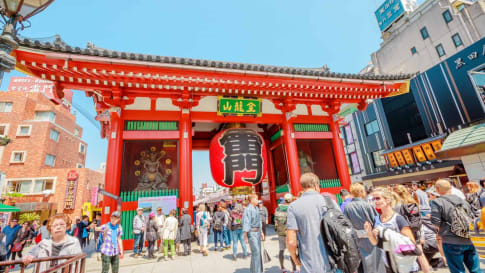
History of Tokyo
A Short History of Tokyo Shibuya Crossing in Tokyo, the busiest intersection in the Japanese metropolis The history of Tokyo is intimately intertwined with that of Japan’s. In this article, we’ll explore Tokyo’s history from…

Japan travel tips - a guide for mature travellers
Japan travel tips – a guide for mature travellers This article is a guide for mature leisure travellers who are considering their first visit to Japan. Visiting Japan, a land of dazzling contradictions, is an…
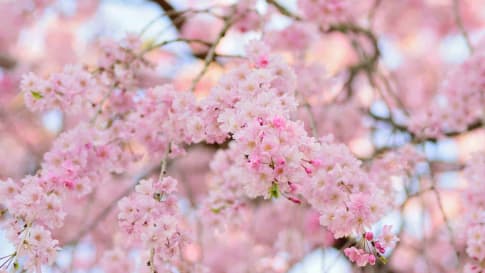
Japanese hanami: celebrating the cherry blossom
Japanese hanami: celebrating the cherry blossom The cherry blossoms of Japan are known to admirers the world over. But their brief, beautiful season is not just a draw for international travellers. Japanese people celebrate this…

Kyoto, Japan
Kyoto, Japan Kyoto, the “thousand-year capital”, served as Japan’s imperial capital for more than a thousand years. This long history makes it synonymous with Japanese traditional culture. A tour in Kyoto promises beautiful heritage sites–ancient…

Matsue, Japan
Matsue, Japan North of Hiroshima is the town of Matsue, also known as the “City of Water” as it is near the Sea of Japan, sitting between Lake Shinji (Shinjiko) and Lake Nakaumi. It is…

Nara, Japan
Nara, Japan Nara, Japan’s first permanent capital, is located in the Kansai region, nestled in the hilly edge of the Nara Basin, about 40 kilometres east of Osaka. It is a popular day trip or…
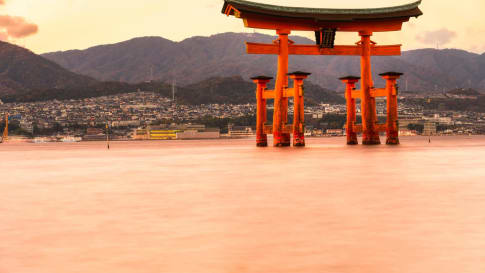
The Shoguns of Japan: An Introduction to Six Centuries of Japanese Cultural Evolution
The Shoguns of Japan: An Introduction to Six Centuries of Japanese Cultural Evolution From 1192 to 1867, Japan was ruled by military dictators called the shogun. The civil government continued under the imperial court in Kyoto,…
